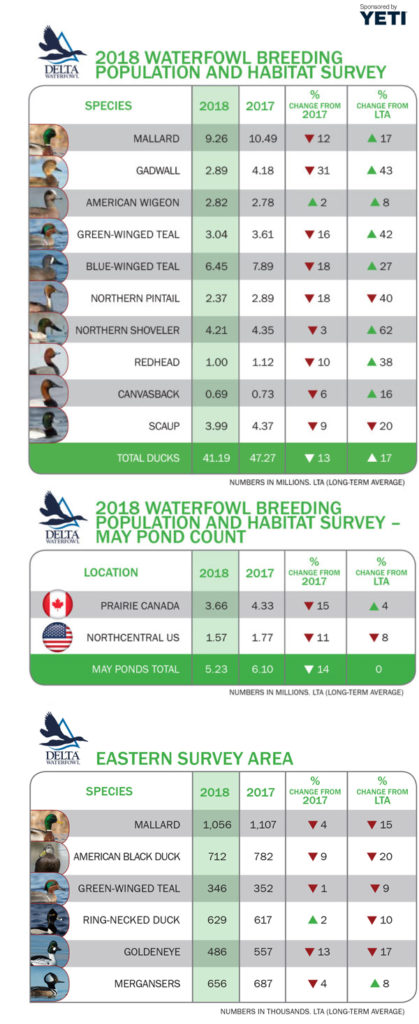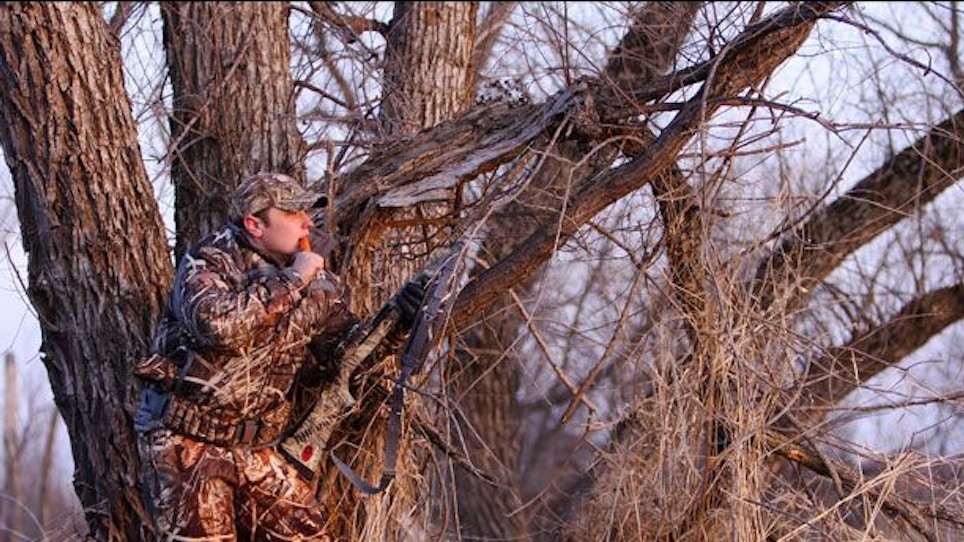Breeding duck numbers fell according to the 2018 Waterfowl Population Status Report but hunters shouldn't see a big decline in the field this season.
Breeding duck numbers are estimated at 41.19 million, a decline of 13 percent from 2017. It's also the lowest number in eight years for breeding ducks based on the spring surveys by the U.S. Fish and Wildlife Service and Canadian Wildlife Service.
 That overall breeding duck number is still 17 percent above the long-term average, though, which is good. Most other species remain strong and above average, according to the report.
That overall breeding duck number is still 17 percent above the long-term average, though, which is good. Most other species remain strong and above average, according to the report.
“The breeding population decreased, but remains quite strong, with most species remaining near or above long-term averages,” said Dr. Frank Rohwer, president and chief scientist of Delta Waterfowl. “Ducks declined due to dry conditions in large portions of the breeding grounds. Fortunately, we continue to benefit from ‘carryover birds’ hatched during highly productive springs over the past several years.”
From Delta Waterfowl's report:
Following a record high two years ago, mallards declined 12 percent to 9.26 million, but remain 17 percent above the long-term average. Wigeon are the only index species that showed an increase, climbing 2 percent to 2.82 million, 8 percent above the long-term average. Blue-winged teal fell 18 percent to 6.45 million, 27 percent above the long-term average. Gadwalls dropped 31 percent to 2.89 million, 43 percent above the long-term average. Green-winged teal decreased 16 percent to 3.04 million, still 42 percent above the long-term average. Northern shovelers declined 3 percent to 4.21 million, 62 percent above the long-term average. Redheads declined 10 percent to 1.00 million, 38 percent above the long-term average. Canvasbacks dropped 6 percent to 686,000, 16 percent above the long-term average.
Only two breeding population estimates are below long-term averages. Northern pintails declined a concerning 18 percent to 2.37 million, 40 percent below the long-term average. Scaup (lessers and greaters combined) declined 9 percent to 3.99 million, 20 percent below the long-term average.
“Bluebills are drifting dangerously close to a return to restrictive harvest regulations,” Rohwer said. “And the pintail number is disappointing. We’d hoped that good wetland conditions across Montana, and portions of southern Alberta and southeastern Saskatchewan, would be enough to give pintails a boost. That was clearly not the case.”
Across the U.S. and Canada, the May pond count registered 5.23 million — 14 percent lower than last year and in line with the long-term average. Pond counts in prairie and parkland Canada, which covers Alberta, Saskatchewan and Manitoba, decreased 15 percent to 3.66 million, but were still 4 percent above the long-term average. Pond counts in the north-central United States, which covers Montana and the Dakotas, declined 11 percent to 1.57 million, 8 percent below the long-term average.
For the full report and survey go here.






